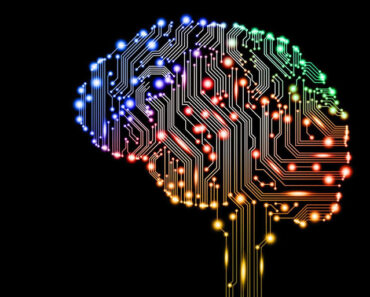This time we will talk more about incentives and proof of work in Bitcoin. We have seen how the consensus of Bitcoin can be achieved before. And already know how it will be able to work safely.
We know that the Bitcoin system is mostly done by combining technical and engineering methods. Further in this section we will discuss the actual incentives that are also engineering in Bitcoin.
The main strength of the bitcoin system is that all nodes are connected within bitcoin. But the most influential node is “Full Node”. Because the Full Node is in charge of protecting the bitcoin network. Full Node also validates, continues to maintain the authentication of all bitcoin transactions.
Validation of bitcoin transactions is not only for validating current and future transactions. However, Full Node also continues to validate previous transactions, since bitcoin started running. So in this case, the more full nodes that enter and contribute to the healthier bitcoin network.
Therefore, there needs to be an impetus to attract many people by contributing to the full node. In this case, providing incentives in the mining ecosystem is the most effective way. Mining incentives, as well as being a distribution mechanism for new bitcoin units.
Incentives Giving
To begin with, we try to assume that we can randomly select node (full node) nodes . Say, at least from time to time there are approximately 50 percent of honest nodes in the Bitcoin network. This assumption of incentives will certainly be a problem if the incentives are given to nodes that try to thwart the Bitcoin mechanism process.
Why is that? Because we certainly cannot assume that all nodes will be honest. Even more precisely is, can we provide incentives so that the node can be honest? Not attacking the Bitcoin network?
Let’s look back at the discussion of an anonymous consensus on zero confirmation and multiple transactions . Can we try to give punishment to the perpetrators of the double transaction? This will certainly be quite difficult because the nodes in bitcoin do not have a real identity. Likewise with the question, can we provide a service reply to the node because it has made a block and is in the consensus blockchain in the long run? Of course it will also be difficult, considering that the Bitcoin node cannot reveal its true identity.
Unless we can send it using digital currency. Now we can begin to get an idea of this. About giving Bitcoin as an incentive for nodes that have been honest and made the block. How can this reward be given? In Bitcoin, there are two kinds of incentives. Ie, block rewards and transaction fees.
Block Reward
In the first mechanism, a block reward is given to the node that has created the block to also include special transactions in the block. Meanwhile, what is meant by this special transaction is the transaction of making a new Bitcoin block. To be able to receive this reward, of course the node already has its own address as a place to receive the reward.
As far as we know so far, the block reward value is 25 Bitcoin. For every 210,000 blocks, the reward value will be halved. And will go down more or less in the next four years. At the beginning, the block reward was 50 Bitcoin, and it had become 25 Bitcoin. And will be reduced by half again in the future. Of course, this reduction in reward will have its own implications later. We will find out more about the implications and relations.
At this point we might ask, why should there be a block reward incentive? And why is this reward only given to honest nodes? Of course we already know that this node will maintain the blockchain chain, as well as to produce new blocks of Bitcoin from time to time. Not true if the provision of incentives also applies to nodes that have been dishonest in the Bitcoin system. The node will get the reward if the block is in the consensus blockchain arrangement in the long run. As with other transactions. Coin creation will be accepted if it is within the Blockchain consensus. That is the background of this mechanism for providing incentives.
This mechanism can work quite strongly. With this mechanism, nodes will have more confidence that other nodes will extend their blocks. And if most of the nodes in the Bitcoin network follow this same rule, then this incentive mechanism will also continue to run as it should.
While the distribution of reward blocks into half if it has reached 210,000 blocks (approximately 4 years), is in the form of a geometric series (measuring line) . We will know that it means a finite sum . And not an infinite series ( infinite sum ) . Overall, the achievement of 210,000 blocks is a total of 21 million Bitcoin.
Note: The 210,000 block limit is the only way a new Bitcoin can and is allowed to be created. And the total amount is 21 million new Bitcoins that can be made. The sum of these values is a rule that still applies today.
Thus, it means that at least the reward for the creation of the block will end in 2140. Then, in 2140 will the node no longer have an incentive? And lead to the number of nodes that will be dishonest? To make the situation and condition become insecure again? It seems that the assumptions of these questions are still too early. Because there is still a second incentive mechanism in the Bitcoin system.
Transaction Fees
The second incentive mechanism is called transaction fees . What is meant here is, the creators of the transaction can choose to enter transaction costs. By making the total output transaction value less than the total input value. For anyone who has created the first block can place transaction costs. Suppose there is a node that creates a node. Say in that block there are approximately 200 transactions. Then the total cost of the 200 transactions will be paid to the address of the block maker.
Transaction costs are purely voluntary. But based on our understanding of the Bitcoin system, these costs are actually mandatory. Especially if later the block reward decreases, and the block reward period expires at 25 Bitcoin. So it is quite important for users to enter transaction costs to be able to get a reasonable transaction processing quality service.
Although it is still not known exactly how the Bitcoin system will develop later, but the provision of transaction costs has begun to run at this time. This will be quite interesting as a further study on the Bitcoin system later. But that still leaves some problems with the consensus mechanism as we mentioned earlier. First, how can we randomly select node nodes. Second, the Bitcoin system can run unstable if the provision of incentives applies to all who run the Bitcoin node. Because the entire node hopes to get the reward.
And the third is if there are nodes that are dishonest and try to subvert the consensure process by conducting a Sybil Attack. As illustrated in the previous discussion about consensus without identity . To overcome these three linkages, an alternative bridge is needed that can emerge as a solution.
Proof of Work
The three problems above are related to one another. And all three can also be resolved with one thing in common. The so-called proof of work (proof of work) . This underlies the idea of proof of work as an effort to approach the random node selection method. Instead, the node selection is based on its resources. With the hope that no one will monopolize.
For example the resource is computational power. Then these resources become the proof of work system. While the other alternative is the proportion of ownership of digital currencies. Or what is called proof of stake (proof of ownership of shares in the form of digital currency). Although this proof of stake is not used in the Bitcoin system, with proof of ownership it can be used as a legitimate alternative. In addition, this alternative model has also been used in several other digital currencies.
Next let’s try to find out more about how to better select nodes. The selection of nodes is expected to be proportional to the computational power. It could be that this way would allow nodes to compete with each other by using computational power. So that it will be able to generate node selection automatically according to the proportions.
In Bitcoin, achieving proof of work is done by solving hash puzzles . In making a new block, when a node proposes a new block a number, or nonce , is required . When the node combines nonce, the previous hash and the list of transactions that exist in that block can be retrieved the entire hash and string.
So the hash output can produce smaller numbers, related to the size of the hash function output space. Still remember about the discussion of input and output space on hash functions that have been discussed in the discussion of cryptographic hash functions ? If not, the relationship can be seen again why this hash output should be able to produce output smaller than the size of the hash function input space in the discussion about the Hash Function .





